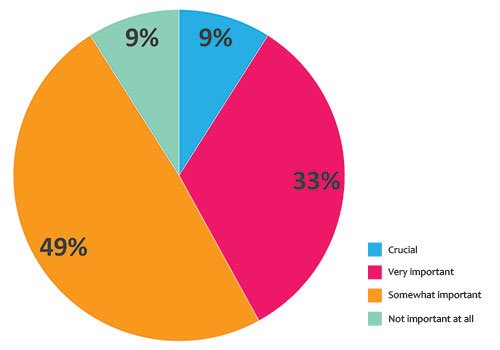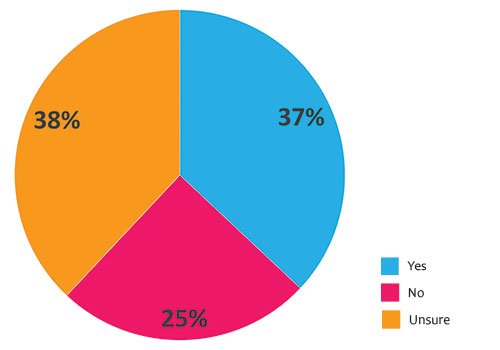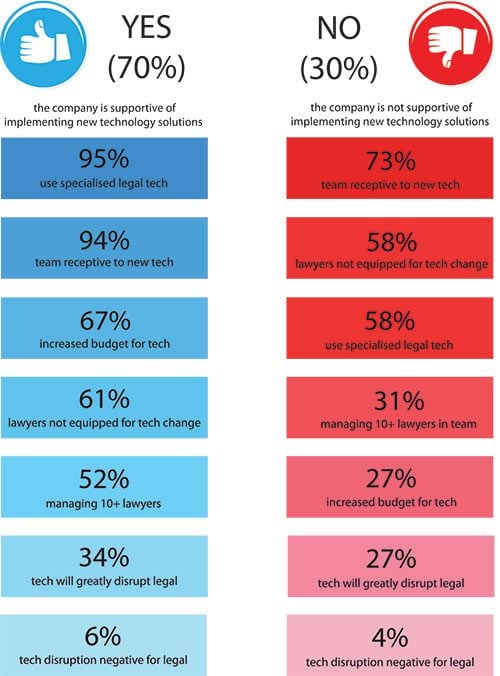Unease with the anticipated digital and disaggregated future is real in many dusty corners of the legal profession, and with around 1,400 legal tech companies fighting for a share of the global legal services market, the prevailing story has been the threat these offerings pose to traditional law firm models. However, this narrative hides a subtler shift in how some law firms are approaching this impending disruption: they are working with the innovators, not against them.
Getting into bed with the enemy
In the past two years, law firms have started to create technology incubator programmes within their own walls. Much like the ecosystem of incubators and accelerators famous in Silicon Valley and tech hubs around the world, the idea is to take a business concept in the early stages of development and provide any combination of support, mentorship, facilities and even investment.
This shift might seem counterintuitive to some: why would the old hands team up with the young upstarts whose end goal, in many cases, is to capture the law firm’s own clientele of general counsel who are under continued pressure from the board to minimise their contribution to the $600bn dollar global industry that is big law?
For some firms, engagement with start-ups is the result of a process of introspection, one that began in an attempt to root out the pain points of its lawyers’ working lives.
This growing cohort of law firms is convinced that that there is much to be gained from a willingness to demonstrate a pragmatic grasp of today’s legal marketplace.
Typically, the rewards for the law firm are financial: should they hit on a unicorn, the monetary returns can be huge, as well as the reputational boost given by being associated with a true disruptor in the legal market.
But while the money and fame are both good, oftentimes, the best rewards are less tangible.
‘It’s true; it’s difficult to show to the business real and tangible KPIs. They are more intangible ones,’ says Francesc Muñoz, chief information officer at Cuatrecasas, one of the many law firms around the world who have entered this space. Cuatrecasas is a Spanish firm that has teamed up with innovation platform Telefónica Open Future to create Cuatrecasas Acelera, an accelerator now on its third call after launching three years ago. Cuatrecasas Acelera supports companies at the pre-series A1 phase with mentorship in marketing, finance and business models, as well as 20 hours of free legal advice from 40 participating Cuatrecasas lawyers.
For Cuatrecasas, working with a multinational blue chip like Telefónica has amplified the reach and impact of its Acelera programme. But Telefónica itself also reports the benefits of collaboration in extending influence in the innovation space.
‘On one hand, our network of partners extends our reach and provides us with shop windows to new industries and ecosystems. This allows us to learn from them and eventually enter new markets, hand in hand with market leaders. On the other hand, our partners help us improve our value proposition to entrepreneurs by putting more resources, investment and business development opportunities on the table,’ explains Agustín Moro, global head of partnerships at Telefónica Open Innovation.
‘But some of the start-ups that we are helping become small clients and we hope that they become, in the future, big clients. So you are putting some seeds into the business sector to see if start-ups grow in the future,’ Muñoz adds.
Edmond Boulle, co-founder, Orbital Witness
‘The team comes from the space industry and, when we set up, we were looking at how we could use satellite imagery to solve problems in real estate transactions and litigation. But the real pain points were around other datasets – so accessing all of the information that is required for searches, making that information easier to digest, easier to report back and then communicate to clients. Our system is learning what features to look for from the data, which trains our system to recognise the types of, for example, restrictive covenants, easements, restrictions on the Land Register, and other data sets outside of Land Registry data, that may be indicative of a particular risk in a given type of property transaction. We were one of the first start-ups chosen for the joint PropTech accelerator programme, Geovation, run by HM Land Registry and Ordnance Survey, which means we have their help to innovate with their data.
We came to MDR LAB with very much a fledgling concept, being the earliest stage company they had taken on in the first cohort. The lab was helpful in a number of ways: in terms of access to great advisers, in understanding the wider real estate industry – not just the legal side. By far and away the most important thing was being able to sit down with over 40 of their real estate lawyers, day-in day-out, and just go through how they work in an almost forensic way. This allowed us to identify which bits don’t add value to their practice and were time consuming and repetitive, which we could then meaningfully make an inroad into, in terms of helping them with speeding up or automating.
A good solution is one which works at both ends, so they made introductions to their clients – in fact we’re piloting with a few of them as well. It will be between the law firm and the client to decide how best to allocate the use of our platform, so maybe the client can do some of the work in-house, and then the law firms can maybe do the deeper dive on the due diligence themselves a little later on, and still get the benefit of using us to work more quickly and more effectively.
Lawyers are still typically very risk averse – even among the firms who are pushing innovation, fundamentally, some individual lawyers are more risk averse. I think there’s a sense in which you can be welcomed in initially, and then it can soon feel that you’re having to battle more traditional attitudes. But then, I don’t even put that on the law firms. They are responding to the risk that their clients are willing to take. So if their clients express a desire to take a little bit more risk, the reward from it will be a faster and lower cost service. Quite often, they want to reduce fees as well, but they still want that quality service.
Very recently, at an insurtech conference, someone made a really nice point that when lawyers talk about innovation, they often use the image of a robot. And when they talk about machines replacing lawyers and a) how concerned they are by that, or b) how ridiculous they think that is, they also use the image of a robot. So even in the industry, they’re not quite sure what to make of this.
We’re starting to make some great headway; we’re working with a number of early adopter law firms who are highly respected in the field, and a leading title insurance company and we are going to continue along that path, at least until the end of the year. There’s a point at which you can’t call the next client an early adopter any more!
We’re working very closely with our first customers because their feedback really helps accelerate product development. And Mishcon de Reya was our first customer. We’re also piloting and testing our products with small teams and GCs at the clients of the law firms that we work with. The issues around that are quite interesting because if you’re working with a big law firm with upwards of 50 lawyers, you have one pricing model, which has to scale appropriately and allow for disbursable cost elements. But then you come to an in-house team with three or five people, so you have to think, “How do I make my pricing model work for them?” It’s a different game. How do you go from being a product that’s serving large departments, to serving a client with a smaller number of lawyers in-house if, for example, you are offering a subscription service?’
Those seeds could include investment, although that is not the point, says Muñoz. At Cuatrecasas Acelera, the firm doesn’t take a stake in the businesses that pass through the programme. But the agreement includes an option that, at the next investment round, Cuatrecasas could invest under the same conditions as the lead investor, up to a percentage.
‘It’s really quite a minor percentage of the start-up. It’s completely an option, but other acceleration programmes take a stake in advance of 2%, 3% or 5%,’ says Muñoz.
Culture change
But there is a broader cultural benefit to be enjoyed much sooner, according to Muñoz. ‘You are putting the most innovative people that you can find in your sector in contact with your lawyers, with your teams. It creates a really beautiful circle and a lot of passion within the people that are interacting with them and giving advice,’ he explains.
The head of another law firm-founded incubator agrees: ‘I’ve seen how the legal sector is quite traditional, but also how the firm’s people – the partners, the associates – have actually become a lot more innovative in their thinking just by spending time working on a day-to-day basis with those start-ups based in their building. And actually, with the companies from last year, the majority have continued to work with the firm and have integrated inside, so the firm is now using these new technologies, making them a whole lot better, and they’ve changed their own mindsets, too.’
However, opening up to innovation often means letting go of a mindset focused on success, ingrained by the often adversarial nature of both litigation and corporate law. The reality of start-up life is the ever-present whiff of failure, and that is something that law firm lawyers, accustomed to being the experts, must adjust to. For many, that’s a case of learning how to ‘fail better’ and move on. Being the expert in one vertical might simply not be enough in today’s marketplace, where openness to innovation might be less of a soft skill and more of a business imperative.
‘As a former lawyer for stock markets, I always keep an eye on the new trends in the legal tech niche. The transformation speed in this traditional vertical is so fast that I could not think of a law firm that aspires to be market leader without working with start-ups and using their technologies. All the leading firms that I am aware of have programmes or initiatives to capture and benefit from innovation,’ says Moro.
Making a mark
In a profession often noted for its resistance to change, there can be kudos for those bold enough to be a first mover. According to Edmond Boulle, co-founder of Orbital Witness, a start-up real estate intelligence platform that employs satellite imagery and property data analysis to flag legal risk in real estate transactions, there is a clear advantage for those who get in on the ground at an early stage in technological development.
‘They have a meaningful say in product development. We are listening to that and we are designing our products around the things that they are telling us are painful. They are seeing iterations of the product and feeding back on that, so if you’re an early adopter, you’re bespoking it a little bit to your style of working. As soon as you’ve got a critical mass of customers, it ceases to scale from the start-up’s perspective to adapt your product to individual needs and preferences, and from the customer’s perspective, it’s more of a fixed offering,’ he says.
But, perhaps the bottom line speaks loudest. A spokesperson at one law firm accelerator claims that a growing willingness to embrace technology has meant that not only is there no better time to be a lawyer – but that the efficiency savings of legal tech could even grow market share.
‘Let’s be fair, some parts of a lawyer’s job are not very fun. You don’t want to stay up reading the same lease a thousand times, you don’t want to chase signatures at midnight or hang out at the printer. You want to do the legal work and so the technology enables that by taking away a lot of the drudgery. The smart lawyers understand that they can pull that off, they can get more work, win more competitive panels, they’ll grow their share of clients and have a more fulfilling legal practice.’
A helping hand from Goliath
For the legal tech start-ups themselves, the benefits are much more tangible. For Orbital Witness, coming into the MDR LAB, run by UK law firm Mishcon de Reya, was an opportunity to adapt a fledgling space tech concept – it was the earliest stage company the lab had taken on in its first cohort – into a viable legal tech one, by gaining an inside view of the workings of a law firm.
‘The genesis of the Orbital Witness platform, frankly, was seeing lawyers’ desks covered in papers – from the local authorities, from specialist search providers, from the Land Registry – and every time they were trying to find a piece of information talking about a property, instead of being able to jump to what they wanted, they were either searching through document management systems on their computer or rooting through the desk strewn with papers. It just struck me as very laborious,’ recalls Boulle.
But on top of the opportunity to forensically analyse the working methods of 40 lawyers in the firm, Orbital Witness was able to learn about the real estate industry beyond the legal side and, crucially, meet some clients.
‘We’re piloting with a few of them now. And we’re actually going a little bit further than that as well: we’re building collaborative tools. We saw that a lot of time goes into emails and phone calls between a lawyer and a client. Now, obviously, that’s part of the personal relationship with the lawyer and client, and that’s not going anywhere. But if you’ve got five emails back and forth trying to describe what part of the land the lawyer is talking about, that’s just inefficiency. So by bringing both the lawyer and the client onto a collaborative workspace on the platform, you can cut out a lot of that needless, repetitive back and forth,’ explains Boulle.
For some firms, engagement with start-ups is the result of a process of introspection.
Other benefits for start-ups that join such innovation spaces might include the opportunity to adapt an existing product to a new legal and regulatory environment, or to get that first customer. Those in the latter position face a slow, and sometimes demoralising sales cycle into big law of 18-24 months.
‘We started as a DMS (document management software) six years ago with a focus on law firms. After some years, we realised that law firms are slow to decide and that they don’t have the big budgets large corporations have for growing their organisations. Therefore, we changed our strategy and began offering our product and service to large corporations,’ explains José Manuel Jiménez, CEO of Webdox, a Chilean start-up and beneficiary of Telefónica’s Wayra Chile programme.
Beneficiaries of law firm accelerators benefit from compressing that cycle by piloting their technology to an audience with an intellectual, if not financial (yet) stake.
If a law firm doesn’t ultimately take the bait, the legal tech model, often comprised of Software as a Service companies charging per user even while their founders sleep (as opposed to billing hours), seems to be increasingly appealing for institutional investors – which bring professional management expectations and software company economics into the legal tech ecosystem.
Don’t fear the new legal ecosystem
The result of all this is a new ecosystem within the legal community. Firms are no longer at odds with legal innovators, and lawyers shouldn’t let a fear of ushering in their replacements stop them from securing benefits of their own out of this new norm.
But is any residual fear within the legal services industry justified? At Cuatrecasas, Muñoz thinks not: ‘We don’t see lawyers disappearing from here; we see keeping probably the same amount of lawyers – doing different things, sure, and in a different way, sure – with more support of technology, probably working much more with engineers in order to set up a full legal service, not only legal advice.’
Boulle agrees that the sector will change, but not necessarily to the detriment of lawyers. ‘Certainly the product that we have now is just about starting to make their lives easier and better, and it works in symbiosis with them – we can’t work without lawyers,’ he says.
‘I think there is room in certain parts of the industry to remove particular tasks from lawyers altogether. I don’t think of ours as a “putting lawyers out of a job” tool, it’s just simply saying there are some things where, if the volume and cost of the work means it’s not feasible to have a professionally qualified individual doing a detailed analysis, it makes more sense to balance the risk and the cost and have a machine to assist in the process.’
The realist of start-up life is the ever-present whiff of failure.
In-house legal departments, driving this market with their continued disaggregation of external support, also stand to benefit from a diversified job market for their own skills, as the legal tech sector expands, offering hybrid legal-entrepreneurial roles.
Of course, this is likely to be some way off. Legal tech companies with true brand recognition remain few and far between, with much of the investment cultivating companies applying state-of-the-art technology to commonplace tasks like contract review – hardly the stuff of dreams. And as companies progress beyond the start-up stage, growth will be a challenge, as multiple small operations compete for the bandwidth of law firms.
If the law firms incubating and accelerating legal tech are to believed, private practice has more to gain than lose from embracing technology. An easier life, greater professional satisfaction, and an enlarged – and happier – circle of clients who remain loyal because they share in the efficiency dividend all beckon for those with open minds.
But for those who think that is too good to be true, perhaps becoming a stakeholder in the digital future is at least a way to avoid ending up at its sharp end – sharing the gains of technology rather than counting among its casualties.












